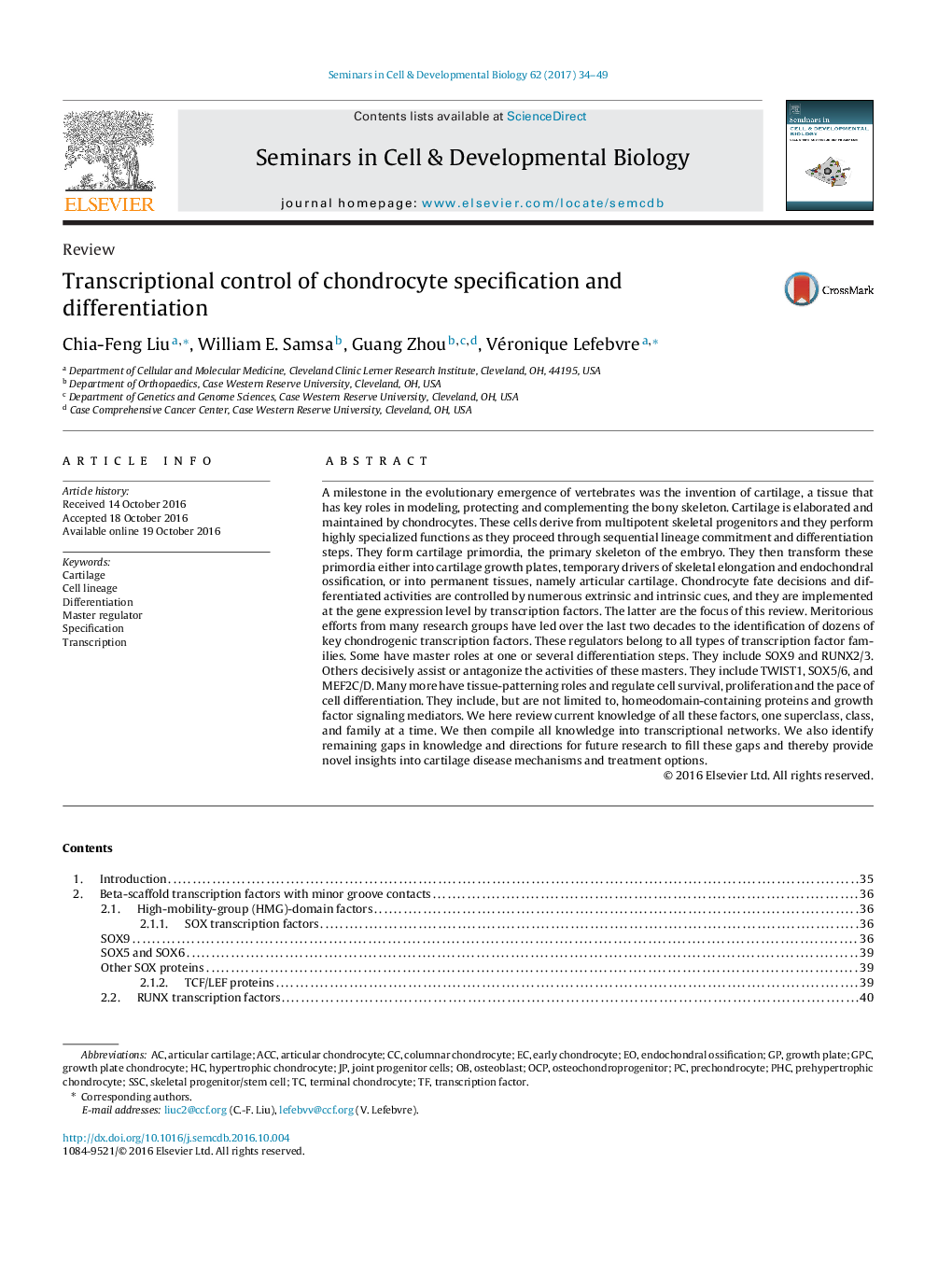| کد مقاله | کد نشریه | سال انتشار | مقاله انگلیسی | نسخه تمام متن |
|---|---|---|---|---|
| 5535031 | 1551361 | 2017 | 16 صفحه PDF | دانلود رایگان |
A milestone in the evolutionary emergence of vertebrates was the invention of cartilage, a tissue that has key roles in modeling, protecting and complementing the bony skeleton. Cartilage is elaborated and maintained by chondrocytes. These cells derive from multipotent skeletal progenitors and they perform highly specialized functions as they proceed through sequential lineage commitment and differentiation steps. They form cartilage primordia, the primary skeleton of the embryo. They then transform these primordia either into cartilage growth plates, temporary drivers of skeletal elongation and endochondral ossification, or into permanent tissues, namely articular cartilage. Chondrocyte fate decisions and differentiated activities are controlled by numerous extrinsic and intrinsic cues, and they are implemented at the gene expression level by transcription factors. The latter are the focus of this review. Meritorious efforts from many research groups have led over the last two decades to the identification of dozens of key chondrogenic transcription factors. These regulators belong to all types of transcription factor families. Some have master roles at one or several differentiation steps. They include SOX9 and RUNX2/3. Others decisively assist or antagonize the activities of these masters. They include TWIST1, SOX5/6, and MEF2C/D. Many more have tissue-patterning roles and regulate cell survival, proliferation and the pace of cell differentiation. They include, but are not limited to, homeodomain-containing proteins and growth factor signaling mediators. We here review current knowledge of all these factors, one superclass, class, and family at a time. We then compile all knowledge into transcriptional networks. We also identify remaining gaps in knowledge and directions for future research to fill these gaps and thereby provide novel insights into cartilage disease mechanisms and treatment options.
Journal: Seminars in Cell & Developmental Biology - Volume 62, February 2017, Pages 34-49
